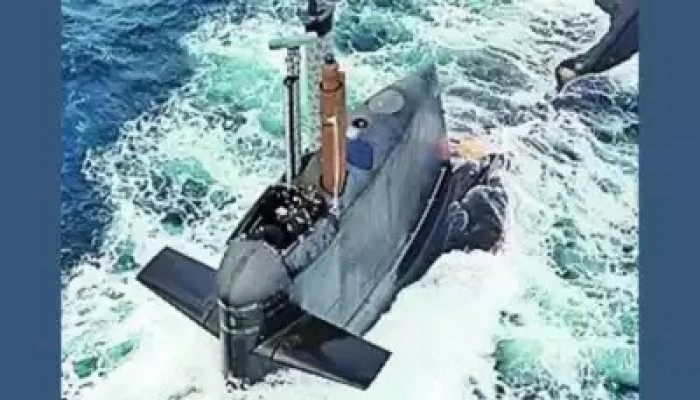Indian Navy making strides with autonomous unmanned vessels
- In Reports
- 06:35 PM, Jul 24, 2023
- Myind Staff
According to reports, the Indian Navy is making significant progress in harnessing cutting-edge technologies like cyber, artificial intelligence, and big data analytics to bolster its capabilities for future warfare. The Navy's initiatives range from autonomous unmanned vessels to advanced combat management systems, software-defined radios, and data links.
One notable development is the upcoming sea trial of the Navy's first ocean-going autonomous boat, equipped with intelligence, surveillance, and reconnaissance (ISR) capabilities. This 15-meter long boat, a joint effort by the Navy's Weapons and Electronic Systems Engineering Establishment (WESEE) and Bharat Electronics Ltd (BEL), is scheduled to undergo navigation testing through maritime traffic between Mumbai and Goa after the monsoon season.
Additionally, the Indian Navy has formulated an "Integrated Unmanned Roadmap" aimed at incorporating autonomous aerial, surface, and underwater platforms of varying sizes and types over the next decade. This strategic move aligns with global efforts by nations like the US and China, which have been exploring long-endurance, unmanned vessels capable of revolutionizing modern warfare.
Apart from unmanned platforms, the Navy is preparing to commence testing of an indigenous new-generation combat management system (CMS). This system serves as the "nerve center" of a warship by integrating all sensors and weapons and facilitating communication with other platforms through data links. Developed by WESEE, the CMS is set to be deployed on all warships commissioned between 2024 and 2029, offering improved user interface and faster reaction times through AI algorithms.
Furthermore, the collaboration between WESEE and Bharat Electronics Ltd has led to the development of three variants of software-defined radios equipped with top-level encryption. These radios are replacing older VHF radio sets on warships, submarines, and aircraft, providing multimedia capabilities and enabling longer-range data transmission.
The Navy is also actively working on the new-generation Data Link-II system, a project aimed at enhancing network-centric operations across warships, submarines, aircraft, and shore establishments. This ambitious initiative includes features such as platform time synchronization, a modular and scalable open architecture, and enhanced fault tolerance.
Image source: TOI







Comments